Table of Contents
Comptine D’Un Autre Été L’Aprés Midi – Yann Tiersen (piano sheet music)

Comptine d’un autre été : L’Après-midi
is a famous composition of classical music-film music for solo piano, by singer-songwriter Yann Tiersen. Music from the film Le Fabuleux Destin d’Amélie Poulain, by Jean-Pierre Jeunet in 2001, it is part of the album Le Fabuleux Destin d’Amélie Poulain (soundtrack), César for best original music 2002, successfully sold at over a million copies worldwide.
Please, subscribe to our Library.
If you are already a subscriber, please, check our NEW SCORES’ page every month for new sheet music. THANK YOU!
Him is Yann Tiersen,
what he likes in life is to compose and play music with his piano, violin, guitar, and accordion. Amélie Poulain will change her life. He composes and plays this work for her in the form of a nostalgic, melancholic and joyful nursery rhyme-song, in memory of an afternoon of a past summer…
With more than 32 million admissions, the major international success of the film and its soundtrack make Yann Tiersen and this composition famous throughout the world.
Le Fabuleux Destin d’Amélie Poulain
is a Franco-German film by Jean-Pierre Jeunet released in 2001. It is a romantic comedy written by Jean-Pierre Jeunet and Guillaume Laurant with Audrey Tautou in the title role.
The film is an original and sometimes idealized representation of contemporary life in Paris in the Montmartre district. It is one of the biggest worldwide commercial successes for a French film. The film received numerous awards, as well as multiple nominations including thirteen at the Césars and five at the Oscars.
In 2002, he won four Césars, including Best Film and Best Director.
film music
is the music used for a film, wanted by the director and/or the producer. This can be pre-existing music (compilations, covers, as in 2001, A Space Odyssey, Trainspotting, or Pulp Fiction), or music composed especially for the film (as in James Bond, Star Wars , The Lord of the Rings or Harry Potter): we then speak of “original soundtrack” (BO), in English “original soundtrack” (OST). In this case, in France, the composer of the soundtrack is considered as one of the authors of the film, in the same way as the scriptwriter(s), and the director.
The powers of music
Its expressive function is located on several levels, associated or not, dramatic, lyrical, aesthetic or symbolic, in a more or less distanced relationship with what is happening on the screen, whether to characterize or illustrate the scene musically, to give it a emotional power over the spectator, even making him play the role of a character or a symbolic event by the use of a leitmotif.
The first scores written specifically for the cinema generally play the same role as the pieces of the classical repertoire that they replace: they only support the cinematographic discourse, often with emphasis and redundancy. This reduction of music to a doubling function will lead the composer Igor Stravinsky to compare it to “wallpaper”.
Little by little, the music breaks the cocoon of simple sound accompaniment. It goes beyond its illustrative role to bring an additional dimension charged with meaning. Beyond its aesthetic contribution, it becomes useful and contributes to the story.
John Williams’ score is a revealing example; it transforms the viewer’s expectation into real anxiety in Steven Spielberg’s Jaws. The musical theme becomes an apprehension-inducing leitmotif on its own, repeatedly throughout the film.
In 1969, rock made its appearance in film music. The soundtrack connects the hits. The commercialization of film music is becoming popular. Sales of soundtracks explode by offering a compilation of known songs.
The music becomes inseparable from the image and many directors give it a place of choice. The musical themes of certain films have become popular hits: the music of Modern Times by Charlie Chaplin (1936), the famous theme played on the zither in The Third Man by Carol Reed (composed by Anton Karas), or the sirtaki in Zorba le Grec by Michael Cacoyannis (1964) composed by Míkis Theodorakis, without forgetting the famous credits of Once upon a time in the West (Ennio Morricone) or the Imperial March in Star Wars (signed by John Williams) by Georges Lucas .
Many filmmakers, and not the least, considered that music was a language in its own right in their films and that it contributed to the narration and dramaturgy of fiction, as Mario d’Angelo points out. Yannick Rolandeau thus lends to Jean-Luc Godard this affirmation: “in audiovisual, audio comes first”. The music comes in support of the narration, even becomes a protagonist in its own right, as Alexandre Tilsky considers by referring to Steven Spielberg’s remarks on the music written by John Williams for Indiana Jones.
For Mario d’Angelo, this vision is not very far from that of Claude Pinoteau, co-screenwriter and director of La Boum (1980), who says he wanted, for certain scenes, to use music rather than the dialogue of actors. in what he calls “scenes of silent eloquence” where only images and music speak.
Lasting collaborations are established between director and composer who share the same universe, the same sensibility: Alfred Hitchcock and Bernard Herrmann, Sergio Leone and Ennio Morricone, Steven Spielberg and John Williams, David Cronenberg and Howard Shore, David Lynch and Angelo Badalamenti, Tim Burton and Danny Elfman, Robert Zemeckis and Alan Silvestri, James Cameron and James Horner or in France Georges Delerue and François Truffaut, Luc Besson and Éric Serra, Claude Sautet and Philippe Sarde, Jean Girault and Raymond Lefèvre, Yves Robert and Vladimir Cosmo.
In the 1990s, film music interacted with the story and we could thus see the characters of Magnolia (Paul Thomas Anderson, 1999) begin to sing even though the film was not a musical comedy.
In 1995, seeking to reconnect with greater simplicity and sincerity, the Dogme95 vow of chastity forbade the use of any music whose interpretation would not be represented in the image; it must not be added to the edit, it must be part of the scene. In the jargon of semiologists, an added music is qualified as “hors-diegèse”. If the characters can hear it, then it is ‘diegetic.’
Bollywood and its productions represent a particular case close to the musical, because in addition to the usual soundtrack, there are systematically scenes of sung and danced groups which interrupt the plot of the story, bringing freshness and liveliness, or melancholy and sadness… These passages are even more special because they are sung in playback by professionals, while the actors pretend to sing on the screen.
Relationship of music to film
For Igor Stravinsky, the music was “wallpaper” for the film11,16; by this he meant that the music should support the image and the story, but not take precedence. In musical films, on the contrary, the music is often a preponderant factor since it is what guides the rhythm of the film: the diction (singing) of the actors, their movements, the movements of the camera…
Directors and producers are aware of its importance, including the emotion it can evoke in the viewer, from the tears associated with violins, to the excitement of choppy music with overdriven sound, to the worry , the anguish or discomfort of dissonant music.
In some cases, the director is guided by music, a song, a piece he has in mind, and which may or may not be part of the film’s music. The French director Claude Lelouch is accustomed to this method; he works, before shooting, with a composer, shoots and edits with, as a witness, the pre-recorded music, then, can ask the composer to adapt his music to the duration of the final editing. Other directors shoot and edit their film with music they like and listen to this so-called “temporary” music with a walkman in order to give rhythm to the images.
Can we measure the place of music in a film?
The place of the music is linked to the overall conception that the director (and sometimes the producer) will have of the audiovisual work as well as to the quality of the joint director/composer activity (the composer being chosen for the original music that he will compose but can also often be the adviser for the choice of other music for the film and which are then incorporated into the soundtrack).
In this perspective, for Mario d’Angelo, it is certain that the budget devoted to music in a film production has an impact on the music, but the economic factor does not explain everything. Marc-Olivier Dupin already underlined that: “The Anglo-Saxons have a more balanced requirement in the different fields of creation contributing to the making of the film. They pay particular attention to the music and the soundtrack in all its components. ‘. This care obviously does not have the sole explanation of the budget allocated to the music.
Other reasons also explain the place and the impact of music in a cinematographic work because sound art is only one component, among others but which can be used according to the different possible results expected by the director.
Thus, for example, in the film Nue Propriété by Joachim Lafosse (Isabelle Huppert in the title role), over a total duration of one hour and twenty-eight minutes, the sequences with music (arrangements of Gustav Mahler’s 2nd Symphony by Uri Caine) total only two minutes twenty-three seconds. But the director, for the sake of realism and to favor the heavy atmosphere of his drama, reserves only one track for the music, at the conclusion of the film (there is then no more dialogue) just before the final credits, which becomes silent again (as is also the opening credits).
If the analysis of the role that music plays in a film can only be qualitative, Mario d’Angelo nevertheless believes that this analysis can be accompanied by tangible elements; they will only allow to better support the more global analysis of the audiovisual content in particular of a fiction. In the study that was conducted by a team of academics from the OMF and CEISME, Mario d’Angelo points out the different possible variants in relation to the place of music by defining, in addition to a criterion of duration, a criterion mixing level: “loud or only music” (like the final sequence of Nue Propriété) “music equal to the voice” and “recessed music”.
The verification was carried out on forty audiovisual content, including six feature films. These were retained in the sample to reflect the great diversity of films in terms of the two tangible criteria of length and level of music mixing.
Unlike Nue Propriété, the film Casino Royale, a James Bond film directed by Martin Campbell (2006) with original music by David Arnold, is distinguished first by the length of the music compared to the total length of the film (80%) but here too the music represents a set of musical works incorporated into the soundtrack, including a song performed by Chris Cornell and composed for the occasion by David Arnold. However, it is not part as such of the soundtrack of the film but of the album of the singer. In addition, the action sequences have the particularity of mixing the music with the sound effects.
The measure of the music does not in any way prejudge its quality. However, it is necessary to manage the intellectual property rights related to the musical works (or their extracts) used in the audiovisual content (original music, pre-existing music, i.e. recorded in another context or for purposes other than the film in which it is incorporated).

Best Sheet Music download from our Library.
Browse in the Library:
| Artist or Composer / Score name | Cover | List of Contents |
|---|---|---|
| A dozen A Day Book 1 Technical exercises for the piano |
 |
A dozen A Day Book 1 Technical exercises for the piano |
| A dozen A Day Book 2 Technical exercises for the piano |
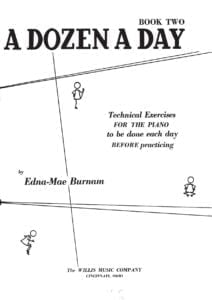 |
|
| A dozen A Day Book 3 Technical exercises for the piano |
 |
|
| A dozen A Day Book 4 Technical exercises for the piano |
 |
|
| A dozen A Day Mini Book Technical exercises for the piano |
 |
|
| A dozen Day Preparatory Book Technical exercises for the piano |
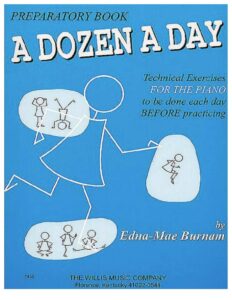 |
|
| A Farewell To Arms Love Theme From A Farewell To Arms film by Mario Nascimbene Francis Webster 1957 |
 |
|
| A Felicidade (Antonio Carlos Jobim) | ||
| A Festival Gathering Of Carols (Musescore File).mscz | ||
| A Fine Frenzy – Almost Lover |
 |
|
| A Fistful of Dollars (Ennio Morricone) | ||
| A Generative Theory Of Tonal Music by Fred Lerdahl and Ray Jackendoff (Book) |
 |
|
| A Guide To Guitar Chords by Curt Sheller |
 |
A Guide To Guitar Chords by Curt Sheller |
| A Guide To Musical Analysis by Nicholas Cook (Book) |
 |
|
| A Handbook Of Piano Playing (By Eric Hope) (1962) |
 |
|
| A Heart Full Of Love (Musescore File).mscz | ||
| A love suicide (Yutaka Minobe) | ||
| A Love Supreme (by Ashley Kahn) The story of john Coltrane’s signature album (Book) |
 |
|
| A Media Luz (Edgardo Donato) | ||
| A Modern Approach To Jazz Rock And Fusion For Guitar with Tablature |
 |
A Modern Approach To Jazz Rock And Fusion For Guitar |
| A Modern Method For Guitar (Berklee) 1 by William Leavitt |
 |
A Modern Method Berklee 1 |
| A Modern Method For Guitar (Berklee) 2 by William Leavitt |
 |
A Modern Method For Guitar (Berklee) 2 |
| A Modern Method For Guitar (Berklee) 3 by William Leavitt |
 |
A Modern Method For Guitar (Berklee) 3 |
| A MOZART REINCARNATED (Ennio Morricone) |
 |
|
| A Mozart Reincarnated by Ennio Morricone (Musescore File).mscz | ||
| A New Approach To Ear Training by Leo Kraft (BOOK) |
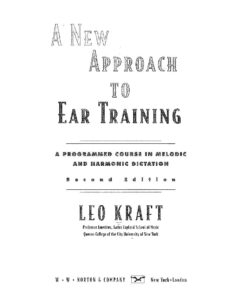 |
|
| A New Approach To Piano Technique (By Ruth A. Dickerson) (1962) |
 |
A new approach to piano technique |
| A Night In Tunisia – Dizzy Gillespie.mscz | ||
| A Pedal Method For The Piano (By Albert F Venino) (1893) |
 |
|
| A Popular Account Of Ancient Musical Instruments And Their Development by William Lynd (Book 1897) |
 |
|
| A Rockin’ Christmas Piano Vocal Guitar |
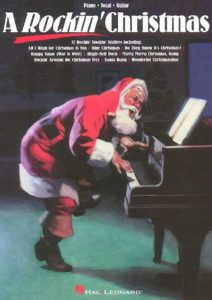 |
A Rockin’ Christmas Piano Vocal Guitar Contents — Rockin Christmas |
| A Single Man – George’s Waltz (Shigeru Umebayashi) | ||
| A Single Man – Stillness of the Mind (Abel Korzeniowski) | ||
| A Smooth Jazz Christmas – Mellow Seasonal Favorites for Piano arr. Roger House |
 |
A Smooth Jazz Christmas – Mellow Seasonal Favorites for Piano arr. Roger House |
| A Song For You – Leon Russell Ray Charles (Musescore File).mscz | ||
| A Star Is Born – Always Remember Us This Way Lady Gaga |
 |
|
| A Star Is Born – Shallow Lady Lady Gaga |
 |
|
| A Tale Of Two Sisters Ost – Epilogue Piano Solo |
 |
|
| A Thousand Years – Twilight OST (Christina Perri) | ||
| A Time For Love – Johnny Mandel |
 |
|
| A Time For Us – Guitar TABlature |
 |
|
| A Time For Us (Love Theme from Romeo and Juliet) Nino Rota |
 |
|
| A Time For Us (Romeo and Juliet OST) Nino Rota | ||
| A Touch Of Jazz 14 well-known hymns, gospel songs and contemporary praise songs by Wolaver Bill |
 |
A Touch Of Jazz 14 well-known hymns, gospel songs and contemporary praise songs by Wolaver Bill |
| A Tribute To Ella Fitzgerald Piano Vocal Guitar |
 |
A tribute to ELLA FITZGERALD |
| A Walk To Remember – Only Hope | ||
| A whiter shade of pale – Procul Harum | A whiter shade of pale – Procul Harum | |
| AaRON U-turn Lili Piano |
 |
|
| Ab Ovo – Joep Beving (Musescore File).mscz | ||
| Abba – Abba Gold – Greatest Hits |
 |
ABBA Gold Geatest Hits booksong sheet music |
| Abba – Chiquitita | ||
| Abba – Dancing Queen | ||
| Abba – Fernando | ||
| Abba – I Have A Dream | ||
| Abba – Like An Angel Passing Through My Room | ||
| Abba – Mamma Mia | ||
| Abba – Slipping Through My Fingers | ||
| Abba – Thank You For The Music | Abba-Thank-You-For-The-Music 1st page | |
| ABBA – Thank You For The Music (Piano Vocal Guitar) | ABBA – Thank You For The Music (Piano Vocal Guitar) | |
| ABBA – Thank You For the Music (Piano vocal Guitar) (Musescore File).mscz | ||
| Abba – Thank You For The Music Piano & vocal | Abba – Thank You For The Music-abba-satb | |
| Abba – The Winner Takes It All | ||
| ABBA Dancing Queen Easy Piano Solo |
 |
|
| ABBA Fernando (Piano Solo arr.) |
 |
|
| ABBA Fernando (Piano Solo arr.).mscz | ||
| ABBA Greatest Hits |
 |
ABBA GREATEST HITS SHEET MUSIC BOOK |
| ABBA I Have A Dream |
 |
|
| Abba The Very Best Vol 1 Easy Piano Hans Gunter Heumann Pop Classics For Piano |
 |
Abba The Very Best Vol 1 Easy Piano |
| Abba The Very Best Vol 2 Easy Piano Hans Gunter Heumann Pop Classics For Piano |
 |
Abba The Very Best Vol 2 Easy Piano |
| Abbey Lincoln Songbook |
 |
Abbey Lincoln Songbook |
| Abbey Lincoln Songbook Piano Vocal Guitar Chords |
 |
Abbey Lincoln Songbook Piano Vocal Guitar Chords |
| Abdullah Ibrahim – The Piano World Of |
 |
Abdullah Ibrahim, The Piano World Of |
| Abdullah Ibrahim The African Piano Of Abdullah Ibrahim Vol 1 |
 |
Abdullah Ibrahim The African Piano Of Abdullah Ibrahim Vol 1 |
| Abdullah Ibrahim The Wedding (piano solo transcription sheet music, partition) |
 |
|
| Abel Korzeniowski – Death Is My Heir (from Romeo and Juliet) |
 |
|
| ABRSM Jazz Piano Pieces Grade 1 to 5 |
 |
ABRSM Jazz Piano Pieces Grade 1 to 5 ABRSM Jazz Piano Pieces Grade 5ABRSM Jazz Piano Pieces Grade 5 |
| ABRSM Piano Exam Pieces Grade 1 (2016) |
 |
ABRSM Piano Exam Pieces Grade 1 (2016) |
| ABRSM Piano Scales, Arpeggios Grade 8 |
 |
|
| ABRSM Piano Scales, Arpeggios and broken chords Grade 1 |
 |
|
| ABRSM Piano Scales, Arpeggios and broken chords Grade 4 |
 |
ABRSM Piano Scales, Arpeggios and broken chords Grade 4 |
| ABRSM Piano Scales, Grade 2 A Guide for Students and Teachers | ABRSM Piano Scales, Grade 2 A Guide for Students and Teachers | |
| ABRSM – Time pieces for guitar vol. 1 |
 |
|
| ABRSM – Time pieces for guitar vol. 2 |
 |
|
| ABRSM 2017 18 Piano Exam Pieces Grade 1 |
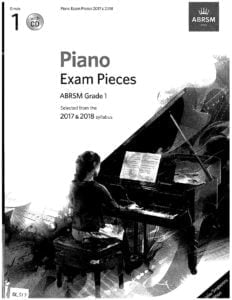 |
ABRSM 2017 18 Piano Exam Pieces Grade 1 |
| ABRSM 2017 18 Piano Exam Pieces Grade 2 |
 |
ABRSM 2017 18 Piano Exam Pieces Grade 2 |
| ABRSM 2017 18 Piano Exam Pieces Grade 3 |
 |
|
| ABRSM 2017 18 Piano Exam Pieces Grade 4 |
 |
|
| ABRSM 2017 18 Piano Exam Pieces Grade 5 |
 |
|
| ABRSM 2017 18 Piano Exam Pieces Grade 6 |
 |
|
| ABRSM 2017 18 Piano Exam Pieces Grade 7 |
 |
|
| ABRSM 2017 18 Piano Exam Pieces Grade 8 |
 |
|
| ABRSM 2021-2022 Piano Exam Pieces Grade 1 |
 |
|
| ABRSM 2021-2022 Piano Exam Pieces Grade 2 |
 |
|
| ABRSM 2021-2022 Piano Exam Pieces Grade 3 |
 |
|
| ABRSM 2021-2022 Piano Exam Pieces Grade 5 |
 |
|
| ABRSM 2021-2022 Piano Exam Pieces Grade 6 |
 |
|
| ABRSM 2021-2022 Piano Exam Pieces Grade 8 |
 |
|
| ABRSM 2021-2022 Piano Exam Pieces Initial Grade |
 |
ABRSM 2021-2022 Piano Exam Pieces Initial Grade |
| ABRSM Aural Training In Practice Book 1 Grades 1 to 3 |
 |
|
| ABRSM Aural Training In Practice Book 2 Grades 4 and 5 |
 |
|
| ABRSM Discovering Music Theory (Complete) Grades 1 to 5 Workbook by Simon Rushby (2020 Exams) |
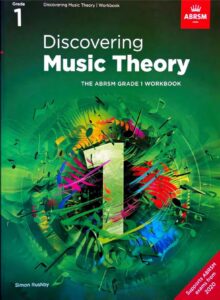 |
ABRSM Discovering Music Theory (Complete) Grades 1 to 5 Workbook by Simon Rushby (2020 Exams) contents |
| ABRSM Erster Verlust Grade 4 ABRSM Piano Exam Pieces 2021 & 2022 |
 |
|
| ABRSM Etude In A Minor – Dmitry Kabalevsky ABRSM Grade 4 Piano Exam Pieces 2021 & 2022 |
 |
|
| ABRSM Grade 2 – Inter-City Stomp byChristopher Norton From Microjazz Collection (Sheet Music) |
 |
|
| ABRSM Initial Grade Piano Exam Pieces 2023 2024 |
 |
|
| ABRSM Minuet and Trio D 41 No 21 – Franz Schubert ABRSM Grade 4 Piano Exam Pieces 2021 & 2022 |
 |
|
| ABRSM More Music Theory Sample Papers Grade 5 For New Format |
 |
|
| ABRSM Music Theory In Practice, Grade 1 (Eric Taylor) |
 |
|
| ABRSM Music Theory In Practice, Grade 2 (Eric Taylor) |
 |
|
| ABRSM Music Theory Past Papers Grade 1 2004 |
 |
|
| ABRSM Music Theory Past Papers Grade 4 2016 |
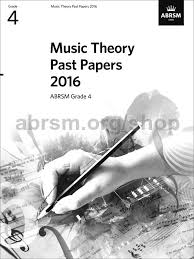 |
|
| ABRSM Music Theory Past Papers Grade 5 2012 |
 |
|
| ABRSM Music Theory Past Papers Grade 6 2013 |
 |
|
| ABRSM Nikki Iles Danny Boy ABRSM Piano Exam Grade 8 2023 Jazz Piano arr. inspired by Bill Evans |
 |
|
| ABRSM Nikki Iles Friends Book 1 Intermediate Jazz Pieces For Piano |
 |
ABRSM Nikki Iles Friends Book 1 Intermediate Jazz Pieces For Piano |
| ABRSM Nikki Iles Friends Book 2 Intermediate To Advanced Jazz Pieces For Piano |
 |
ABRSM Nikki Iles Friends Book 2 Intermediate To Advanced Jazz Pieces For Piano |
| ABRSM Nikki Iles The Elephant Parade ABRSM piano Exam |
 |
|
| ABRSM Piano 2025-2026 Grade 8 C3 A Nightingale Sang in Berkeley Square by Sherwin – Maschwitz |
 |
|
| ABRSM Piano Exam 2007-2008 Grade 3 |
 |
|
| ABRSM Piano Exam 2015-16 Grade 3 |
 |
ABRSM Piano Exam 2015-16 Grade 3 |
